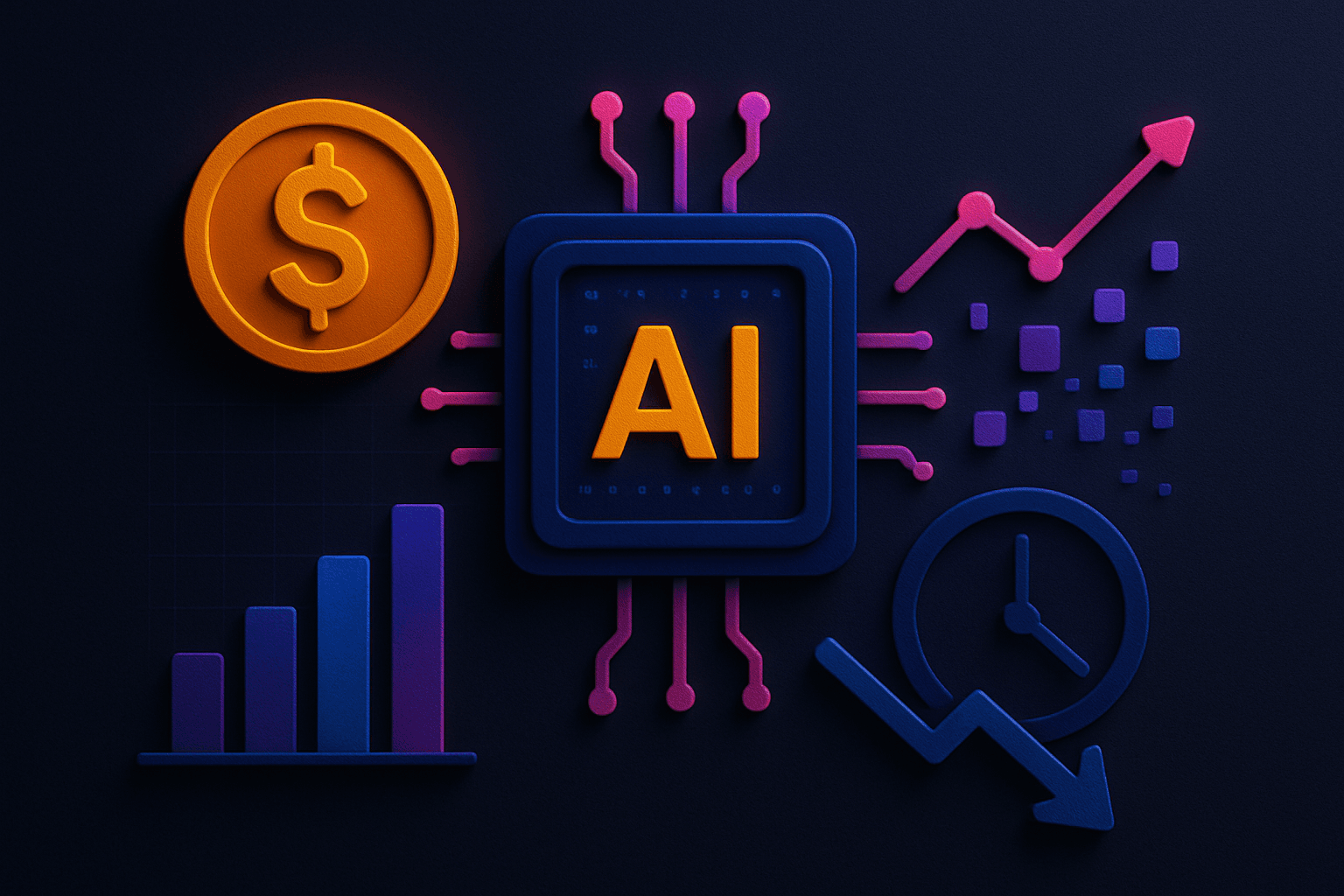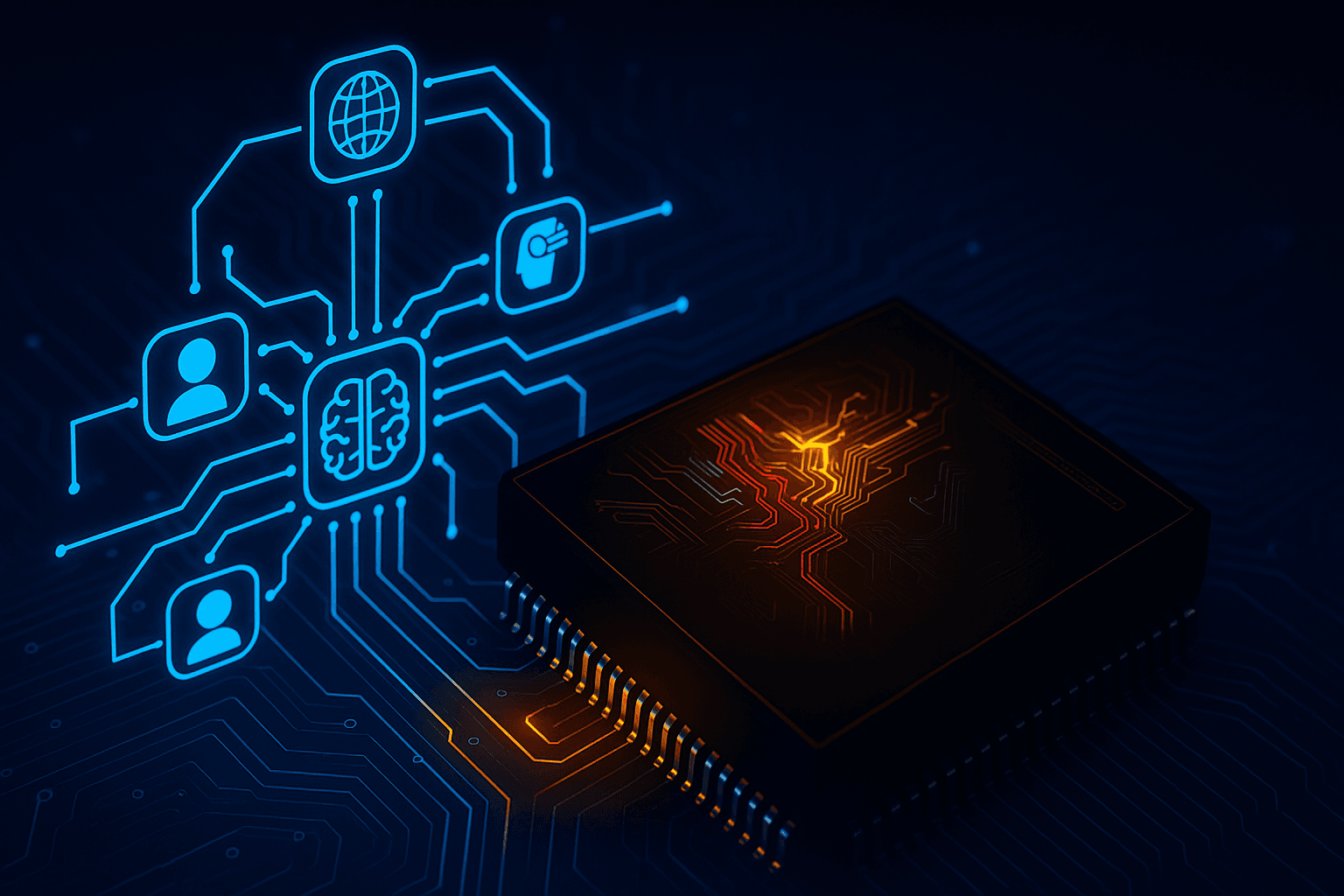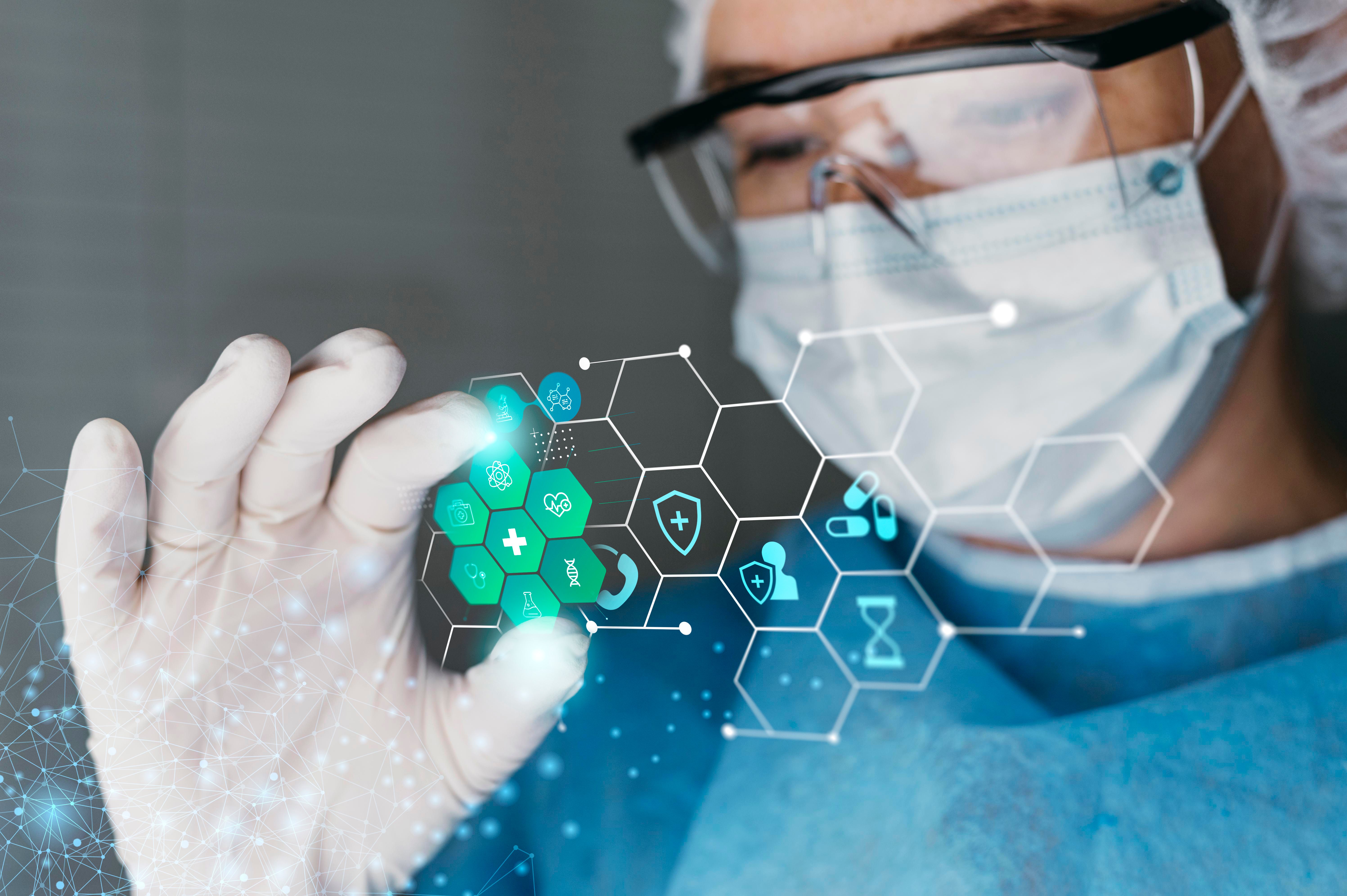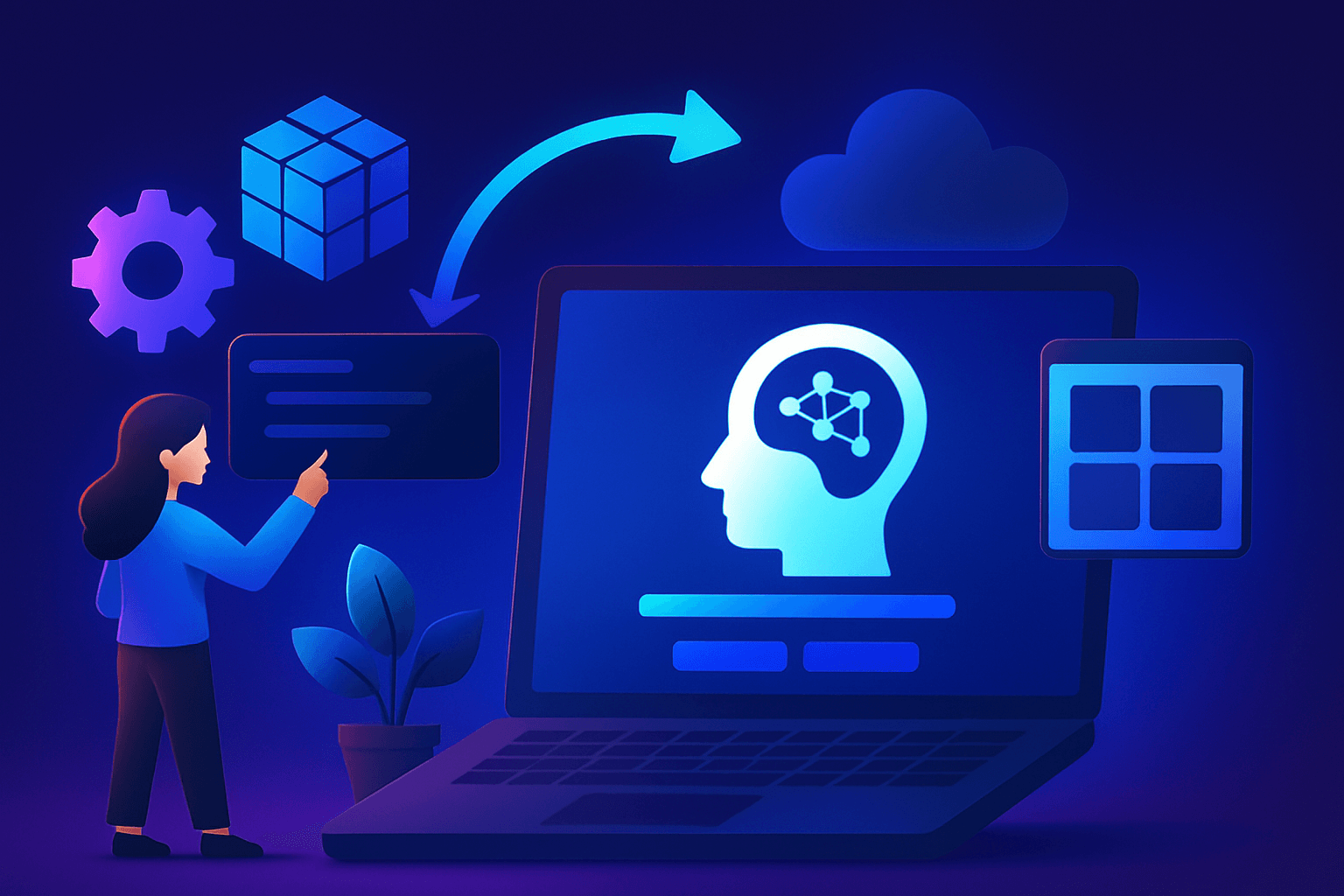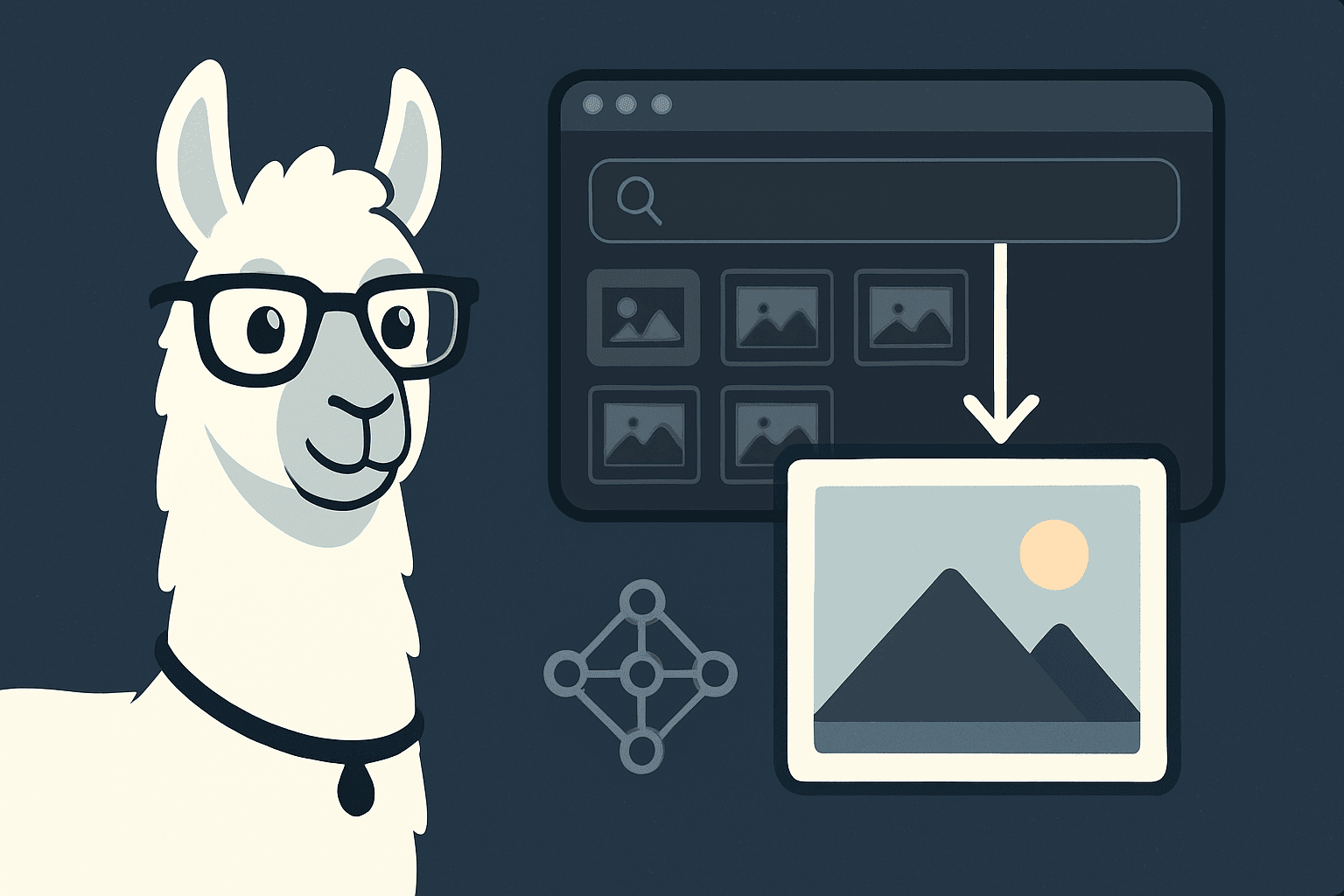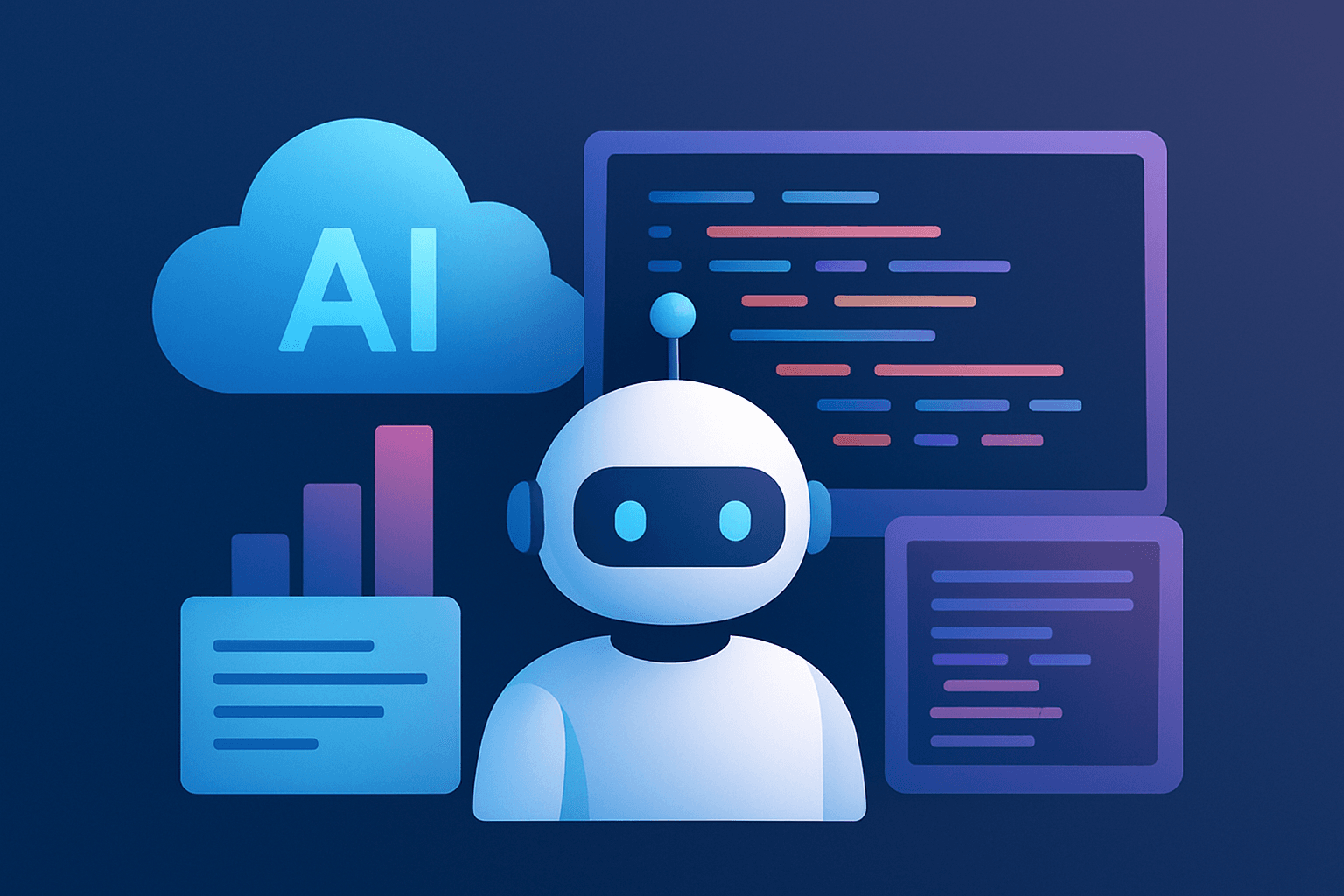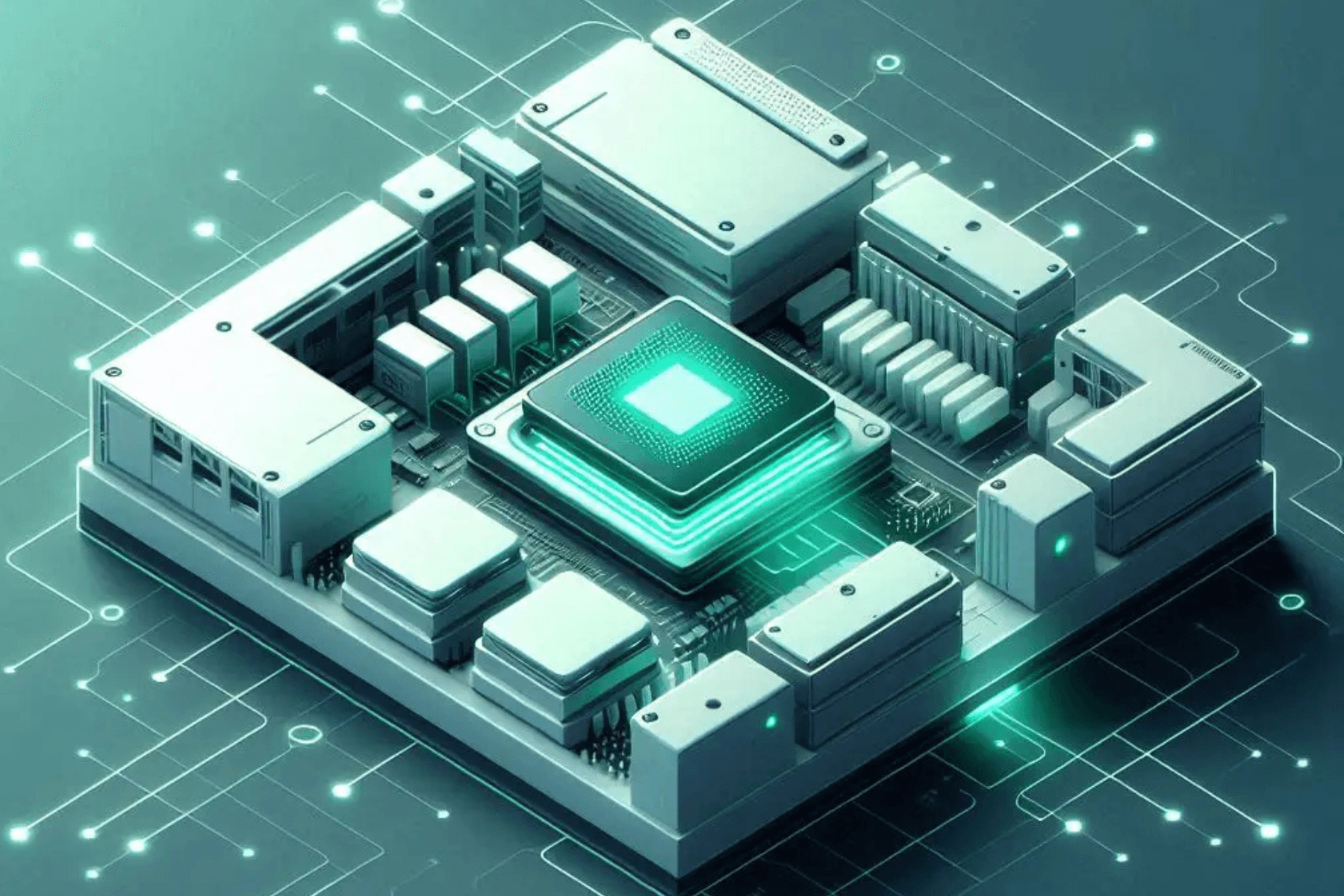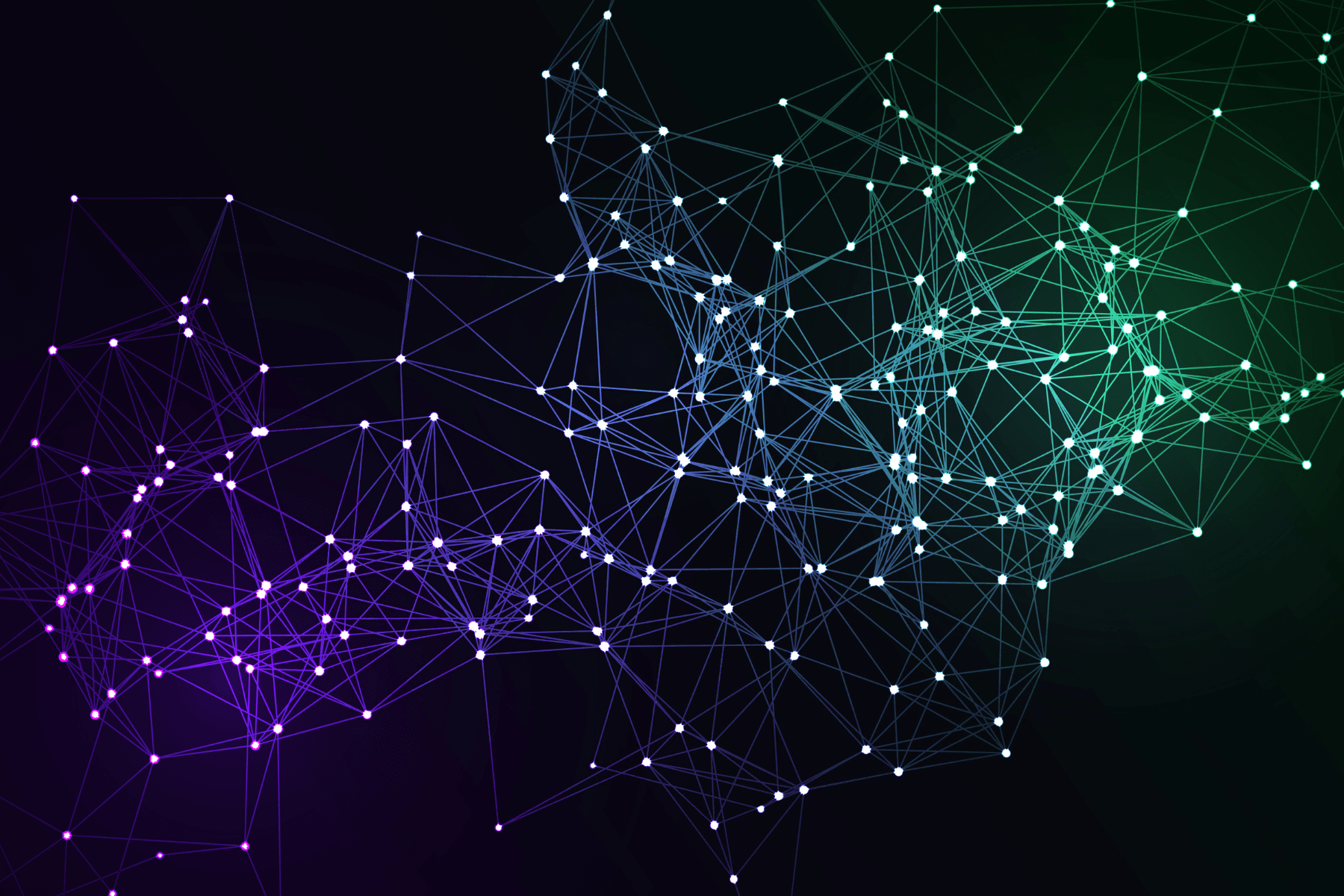Introduction
In recent years, a groundbreaking technological revolution has quietly but profoundly reshaped the landscape of healthcare: the integration of artificial intelligence (AI) into medical imaging. This fusion of cutting-edge AI algorithms with the traditional domain of medical diagnostics has ushered in a new era of precision, speed, and efficiency in healthcare practices. The significance of AI-powered medical imaging cannot be overstated. It represents a paradigm shift in how healthcare professionals diagnose and treat patients. This technology enhances diagnostic accuracy, often surpassing human capabilities, leading to earlier and more accurate diagnoses. It boosts speed and efficiency in processing vast amounts of medical data, reducing waiting times for patients and enabling quicker decisions. Additionally, it has the potential to lower healthcare costs and facilitate personalized medicine, tailoring treatment plans to individual needs.
AI also excels at early disease detection, identifying subtle signs of illness before symptoms manifest, particularly vital in diseases like cancer. Moreover, the data-driven insights generated by AI systems can inform public health initiatives and enhance decision-making in healthcare. As we delve deeper into this blog, we will explore how AI is transforming healthcare by revolutionizing diagnostics, enhancing patient care, and paving the way for a future where medical imaging is more accurate and accessible than ever before.

Understanding AI in Medical Imaging
In the field of medical imaging, artificial intelligence (AI) represents a potent tool that harnesses the capabilities of advanced algorithms to process and interpret medical images with unprecedented accuracy and efficiency.
AI in medical imaging involves the application of computer algorithms to analyze and interpret various types of medical images, such as X-rays, MRIs, CT scans, and ultrasound images. These algorithms enable machines to 'learn' from vast datasets of medical images, detect patterns, and make informed diagnostic decisions. This ability to mimic human cognitive functions in image analysis is a game-changer in healthcare.
At the heart of AI-powered medical imaging are machine learning algorithms. These algorithms are designed to recognize patterns and relationships within medical images. In the context of medical imaging, both supervised and unsupervised learning can be utilized.
Deep learning, a subset of machine learning, has emerged as a game-changer in medical imaging. Deep learning models, such as Convolutional Neural Networks (CNNs) and Recurrent Neural Networks (RNNs),t are designed to process complex data, including images, in a manner that mimics human neural networks. CNNs, in particular, have been exceptionally successful in image analysis tasks due to their ability to automatically extract hierarchical features from images.
Understanding these AI components is fundamental to comprehending the transformative potential of AI-powered medical imaging. In the subsequent sections of this blog, we will explore how these technologies are revolutionizing diagnostics, improving patient care, and shaping the future of healthcare
The Impact of AI in Diagnostics
AI's integration into healthcare has ushered in a new era of diagnostic accuracy and efficiency. There are several advantages of implementing AI in the medical domain:
- Early Detection: AI can identify subtle abnormalities in medical images that might escape the human eye, leading to early disease detection. For example, in mammography, AI algorithms can detect breast cancer at its earliest stages, when treatment is most effective.
- Reduced Human Error: AI reduces the risk of human error in diagnosis. Unlike humans, AI systems do not suffer from fatigue, and they maintain consistent performance throughout the day. This consistency improves the reliability of diagnoses.
- Better Pattern Recognition: AI excels at recognizing complex patterns and relationships within medical images, enabling it to identify diseases based on image features that might be challenging for human radiologists to discern.
AI is making significant strides in identifying a wide range of diseases across various medical imaging modalities. Some of the applications include:
- Cancer Diagnosis: AI is being used to detect cancer in numerous areas, including lung, breast, prostate, and skin. For instance, AI algorithms can analyze lung CT scans to identify early signs of lung cancer, potentially increasing survival rates.
- Neurological Conditions: AI-powered MRI and CT analysis can aid in diagnosing neurological conditions such as Alzheimer's disease, multiple sclerosis, and brain tumors by identifying specific markers and anomalies in brain images.
- Cardiovascular Disease: AI can analyze cardiac images like ECG to detect heart diseases, such as coronary artery disease and congestive heart failure, by assessing factors like blood flow and cardiac function.
- Diabetes prediction: AI algorithms can analyze blood results to predict whether the patient can get diabetes in the future.
- Ophthalmology: In ophthalmology, AI can analyze retinal images to detect diabetic retinopathy, macular degeneration, and glaucoma, allowing for early intervention to prevent vision loss.
Speed and Efficiency
AI-powered medical imaging isn't just about enhancing diagnostic accuracy; it's also revolutionizing the speed and efficiency of the image analysis process. Artificial intelligence brings remarkable speed to the interpretation of medical images, enabling rapid analysis of large volumes of data, such as X-rays, MRIs, or CT scans. This swiftness is invaluable in emergencies, ensuring timely diagnoses. Moreover, AI automates pre-screening, flagging cases requiring immediate attention, and integrates seamlessly with electronic health records, providing comprehensive patient information alongside images, streamlining the diagnostic process
Additionally, AI significantly reduces the potential for human error and saves precious time in healthcare. It maintains consistent performance without fatigue, ensuring high-quality analysis regardless of the time or workload. By automating repetitive tasks, AI allows healthcare professionals to focus on complex cases, speeding up the process and optimizing resource utilization. This efficiency alleviates bottlenecks in healthcare workflows, like radiology departments, reducing patient wait times and enhancing overall service delivery. Furthermore, AI's precision minimizes the risk of misdiagnosis, enhancing patient safety and reducing costly medical errors. Ultimately, AI not only improves diagnostic accuracy but also ensures that patients receive timely care, a vital component of modern healthcare.
Improved Patient Care
The integration of AI into medical imaging is not just a technological advancement; it's a significant leap forward in patient care. One of the most compelling benefits is the potential for better patient outcomes. By enabling more accurate and earlier diagnoses, AI allows healthcare providers to initiate treatment plans at a stage when diseases are most treatable. For example, AI algorithms can detect early-stage tumors in mammograms or lung CT scans, allowing for interventions that can significantly improve survival rates.
Beyond early detection, AI-powered medical imaging offers the advantage of personalized medicine. The technology can analyze a patient's medical images alongside other health data to create a highly individualized treatment plan. For instance, in the case of cancer treatment, AI can analyze the specific characteristics of tumors, such as size, shape, and even genetic makeup, to recommend the most effective treatment protocols. This level of personalization reduces the 'trial and error' often associated with medication and treatment plans, thereby increasing the likelihood of successful treatment and recovery.
AI's role in patient care also extends to monitoring treatment effectiveness. By comparing pre-treatment and post-treatment medical images, AI algorithms can quantify how well a treatment is working, allowing for timely adjustments to the treatment plan. This real-time feedback loop can be invaluable in managing chronic or severe conditions, ensuring that patients receive the most effective care possible.
Stages of Medical Imaging
The process of medical imaging in the context of AI involves multiple stages, each contributing to the overall effectiveness and accuracy of the diagnosis. Here's a breakdown:
Data Collection: The first stage involves capturing high-quality medical images using various modalities like X-rays, MRIs, CT scans, or ultrasounds. The quality of these initial images is crucial, as it directly impacts the AI algorithm's ability to analyze and interpret the data.
Data Preprocessing: Before the images are fed into the AI algorithm, they often undergo preprocessing to enhance quality and remove any noise. This stage may involve normalization, segmentation, and other techniques to ensure that the AI model receives the best possible data for analysis.
Algorithm Training: In this stage, machine learning algorithms are trained on a dataset of medical images. The algorithms learn to identify patterns, anomalies, or specific features within the images that are indicative of particular medical conditions.
Image Analysis: Once trained, the AI algorithm analyzes new medical images to detect and diagnose medical conditions. Advanced algorithms can even differentiate between various stages of a disease, providing more nuanced information for treatment planning.
Interpretation and Validation: After the AI algorithm provides its analysis, healthcare professionals review the results. While AI can offer highly accurate diagnoses, human expertise is essential for interpreting the data in the broader context of the patient's medical history and symptoms.
Treatment Planning: Based on the AI's analysis and the healthcare professional's interpretation, a personalized treatment plan is developed. AI can also contribute to this stage by predicting the likely success of different treatment options based on historical data.
Challenges and Concerns
While AI-powered medical imaging offers a plethora of benefits, it's essential to address the challenges and concerns that accompany its integration into healthcare.
Ethical and Privacy Concerns
One of the most pressing issues is that of ethics and privacy. The use of AI in healthcare often involves the collection and analysis of vast amounts of sensitive patient data. While this data is crucial for the functioning and learning of AI algorithms, it raises questions about data security and patient consent. How is this data stored, who has access to it, and how is it used beyond the immediate medical context? These are questions that healthcare providers and policymakers must answer to maintain patient trust and comply with data protection regulations.
Limitations and Biases
Another concern is the limitations and potential biases in AI algorithms. These algorithms are trained on existing datasets, which may not be representative of the broader population. This can exacerbate existing healthcare disparities and lead to unequal treatment. Moreover, while AI can process information and make recommendations, it does not possess the emotional intelligence and nuanced understanding that human healthcare providers offer.
Algorithmic Transparency
The black box nature of some AI algorithms also poses a challenge. The complexity of these algorithms often makes it difficult to understand how they arrive at specific conclusions. This lack of transparency can be a hurdle in gaining the trust of both healthcare providers and patients, and it complicates the process of validating the algorithm's decisions.
Future Prospects
The future of AI in medical imaging is incredibly promising, with several emerging trends and potential advancements on the horizon.
Multi-Modal Imaging: One of the most exciting developments is the move towards multi-modal imaging, where AI algorithms analyze multiple types of medical images collectively for a more comprehensive diagnosis.
Telemedicine and Remote Diagnostics: As AI technology becomes more accessible and reliable, we can expect a significant rise in telemedicine services that use AI-powered medical imaging. This will make healthcare more accessible to remote and underserved populations.
Real-Time Monitoring: Future AI algorithms could offer real-time monitoring capabilities, providing immediate analysis during medical procedures like surgeries or biopsies, thereby increasing the chances of successful outcomes.
Ethical and Regulatory Frameworks: As technology advances, we can also expect more robust ethical and regulatory frameworks to address the challenges and concerns associated with AI in healthcare.
Conclusion
In this article, we've explored the transformative impact of AI-powered medical imaging on healthcare, a technological revolution that is redefining the way we diagnose and treat medical conditions. From the intricacies of machine learning algorithms to real-world applications, we've seen how AI is not just a tool but a game-changer in medical diagnostics.
We have discussed various stages involved in medical imaging, highlighting the seamless integration of AI at each step. The technology not only improves diagnostic accuracy but also significantly enhances the speed and efficiency of medical imaging processes. This has a direct impact on patient care, enabling earlier interventions and more personalized treatment plans, which in turn lead to better patient outcomes.
However, it's crucial to acknowledge the challenges and concerns that come with this technological integration. Ethical considerations, data privacy, and potential biases in AI algorithms are issues that require ongoing attention to ensure that the technology is applied responsibly and equitably.
Despite these challenges, the future of AI in medical imaging looks incredibly promising. With advancements like multi-modal imaging, telemedicine, and real-time monitoring on the horizon, AI is set to make healthcare more accessible and effective than ever before.
